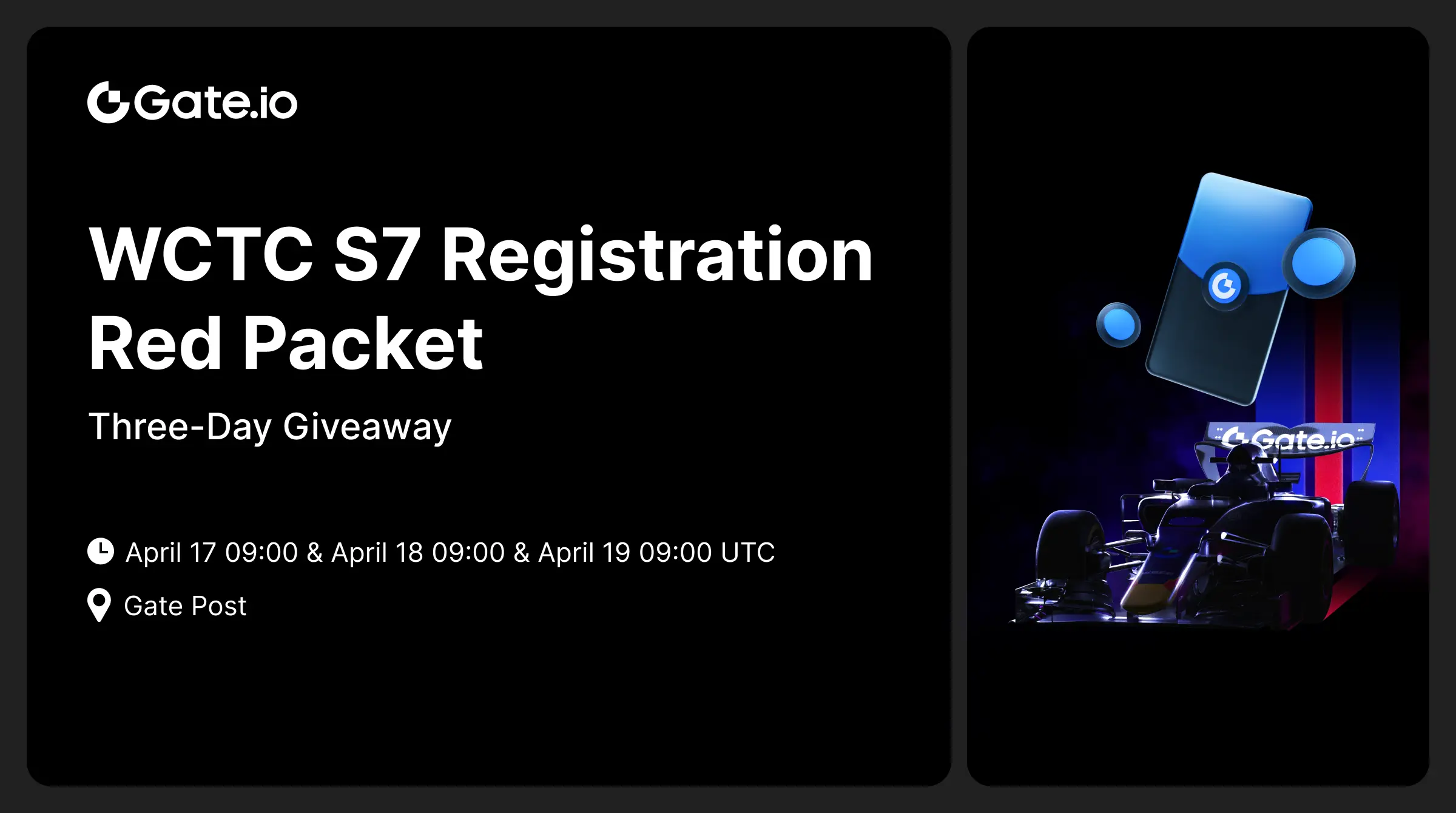- Pin
- 📢 Gate Post Ambassador are Now Actively Recruiting! 🔥
💪 Join Gate Post Ambassador and embark on an exciting journey of creativity and rewards!
Why Become a Gate Post Ambassador?
🎁 Unlock Exclusive Benefits and Showcase Your Talent
- Special Benefits Tasks – earn while creating
- Exclusive Merch – represent Gate.io in style
- VIP5 & Golden Mark – stand out from the crowd
- Honorary Ambassador – shine in the spotlight
🚀 As an Ambassador, You Will Be:
- A key influencer in the community
- A creative leader in the Web3 space
- A driving force behind top-quality content
🎉 Click the link to be
- 👀 Gate.io Mind Challenge - What is the Correct Answer?
💰 4 lucky users with the correct answers will each win $10 Points!
How to Join:
1️⃣ Follow Gate_Post
2️⃣ Like this post
3️⃣ Drop your answer in the comments
📅 Ends at 16:00 PM, April 20 (UTC)
- 🎉 Registration for the $5 Million WCTC S7 Trading Competition is Live!
🎁 Register Now & Claim #Red Packets# for Three Consecutive Days
➡️ Register Here: https://www.gate.io/competition/wctc/s7
🧧 Red Envelope Codes will be Announced on Gate_Post According to the Following Schedule.
🔔 Red Packet Times:
— April 17, 09:00 AM (UTC)
— April 18, 09:00 AM (UTC)
— April 19, 09:00 AM (UTC)
👉 More WCTC S7 Details: https://www.gate.io/announcements/article/44440
Learn Avalanche in 7 Minutes: A Step-by-Step Guide - BTC Hunts
Imagine you’re stuck in traffic, waiting forever to get where you need to go. Now, imagine there’s a new highway built just for you—no traffic, no delays, just smooth sailing. That’s Avalanche (AVAX) in the world of crypto. It’s designed to be faster, cheaper, and more scalable than many of its competitors, including Ethereum. But does it live up to the hype? Let’s dive into everything you need to know about Avalanche.
What is Avalanche?
Avalanche is a blockchain platform that’s designed for speed, low transaction fees, and scalability. Think of it as Ethereum’s faster, younger cousin. It allows developers to create decentralized applications (DApps) and even launch their own blockchains (subnets) while keeping everything running smoothly.
At its core, Avalanche has its own cryptocurrency called AVAX. It’s used for staking, paying fees, and securing the network. But the real magic of Avalanche lies in its unique structure. Unlike traditional blockchains, Avalanche operates on three different blockchains, each with a specific purpose. We’ll get into how that works in a bit.
History of Avalanche
Avalanche was created by Ava Labs, a company founded by Emin Gün Sirer, a Cornell University professor and blockchain expert. The project started in 2018, and by 2020, it officially launched.
Here’s a quick timeline:
Since then, it has become one of the top blockchains, attracting developers, institutions, and crypto enthusiasts.
History of Avalanche
How Does Avalanche Work?
Unlike traditional blockchains, Avalanche doesn’t rely on a single chain. Instead, it uses three different chains to improve efficiency:
Why does this matter? Because by splitting tasks between these chains, Avalanche avoids congestion, making transactions super fast and cheap.
For example, Ethereum processes around 15 transactions per second (TPS). Avalanche? It can handle over 4,500 TPS. That’s a game-changer.
Advantages of Avalanche
Avalanche has some major advantages that make it stand out:
Disadvantages of Avalanche
Is Avalanche a Good Investment?
This is the big question: should you invest in AVAX?
Like any crypto, AVAX has had its ups and downs. It saw huge gains in 2021, reaching an all-time high of around $146. However, it also faced major corrections.
Here’s why some investors are bullish:
But there are risks too:
If you believe in Avalanche’s long-term potential, it could be a solid investment. But always do your research and never invest more than you can afford to lose.
Is Avalanche a Good Investment?
Here’s why some investors are bullish:
But there are risks too:
The Future of Avalanche
Avalanche has a bright future, but it won’t be an easy ride. Here’s what could happen next:
Of course, nothing is guaranteed in crypto. Avalanche has potential, but it also faces challenges.
Final Thoughts
Avalanche is like the high-speed train of the crypto world. It’s fast, efficient, and designed to handle huge amounts of traffic without slowing down. If you’re into crypto, it’s definitely worth keeping an eye on.
Will it replace Ethereum? Maybe not. But will it play a major role in the future of blockchain? Very likely.
So, whether you’re an investor, developer, or just curious about crypto, Avalanche is one name you should know.
FAQs
What is Avalanche (AVAX) and how does it work? Avalanche is a fast, low-cost blockchain using three chains (X-Chain, C-Chain, P-Chain) to improve scalability and efficiency.
How is Avalanche different from Ethereum? Avalanche is faster (4,500 TPS vs. Ethereum’s 15 TPS), has lower fees, and supports subnets for custom blockchains.
Is AVAX a good investment? AVAX has strong tech, growing adoption, and institutional interest but faces risks like volatility and competition.
What is the future of Avalanche? Avalanche aims for wider adoption, better upgrades, stronger partnerships, and potential price growth in the crypto space.